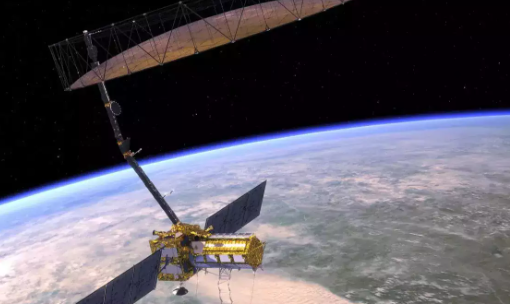NISAR: A New Era in Earth Observation
NASA and ISRO are collaborating on the NISAR satellite. This mission aims to enhance Earth observation and disaster preparedness. NISAR will track changes on Earth’s surface with remarkable precision. It will monitor ice sheets, glaciers, sea ice, and vegetation. The satellite’s launch is scheduled for early next year from India.
Launch Details
NISAR will be launched from Satish Dhawan Space Centre in Andhra Pradesh. It will use ISRO’s Geosynchronous Satellite Launch Vehicle Mark II rocket. The satellite will be placed in low Earth orbit. This position allows for detailed observations of Earth’s surface.
Advanced Radar Technology
NISAR employs two advanced radar systems. NASA provides an L-band radar, while ISRO contributes an S-band radar. This combination is unique; it is the first satellite to carry both types. The radars operate day and night, unaffected by weather conditions. The L-band radar can penetrate dense vegetation, making it effective for monitoring hidden geological features.
Monitoring Earth’s Movements
NISAR will measure horizontal and vertical movements of the Earth’s surface. It will capture data every 12 days. This frequency allows scientists to observe shifts caused by earthquakes, landslides, and volcanic activity. The data will reveal which fault lines are active and which are stable.
Seismic Activity Analysis
While NISAR will not predict earthquakes, it will identify high-risk areas. Researchers can analyse slow-moving fault sections and potential sudden shifts. In regions like California, NISAR will focus on earthquake-prone zones. It will also uncover new risks in less monitored regions globally.
Volcanic Activity
The satellite will monitor surface changes related to volcanic activity. It will track bulging and sinking caused by magma movement. This information is crucial for understanding volcanic behaviour and potential eruptions.
Infrastructure Monitoring
NISAR’s capabilities extend to infrastructure protection. It will help monitor levees and aqueducts for damage. Resource managers can target inspections based on NISAR’s data, improving efficiency. In disaster scenarios, the satellite will quickly identify compromised structures.
International Collaboration
NISAR represents an important US-Indian partnership. JPL leads the US component, providing advanced instruments. ISRO’s U R Rao Satellite Centre manages the spacecraft and launch services. The collaboration exemplifies the power of international teamwork in addressing global challenges.
Testing and Readiness
In 2023, NISAR underwent rigorous testing in Bengaluru. It demonstrated resilience in a thermal vacuum chamber. This testing prepares the satellite for the harsh conditions of space. The mission is poised to make substantial contributions to Earth science.
Important Facts for Exams:
- NISAR: NISAR stands for NASA-ISRO Synthetic Aperture Radar. It is a collaboration between NASA and ISRO aimed at improving Earth observation and disaster preparedness.
- Satish Dhawan Space Centre: This facility is located in Andhra Pradesh India. It serves as ISRO’s primary launch centre for satellite missions including the upcoming NISAR satellite launch.
- Geosynchronous Satellite Launch Vehicle Mark II: This is a rocket developed by ISRO. It is designed for launching satellites into geosynchronous transfer orbits and will launch NISAR into low Earth orbit.
Month: Current Affairs - November, 2024
Category: Science & Technology Current Affairs


